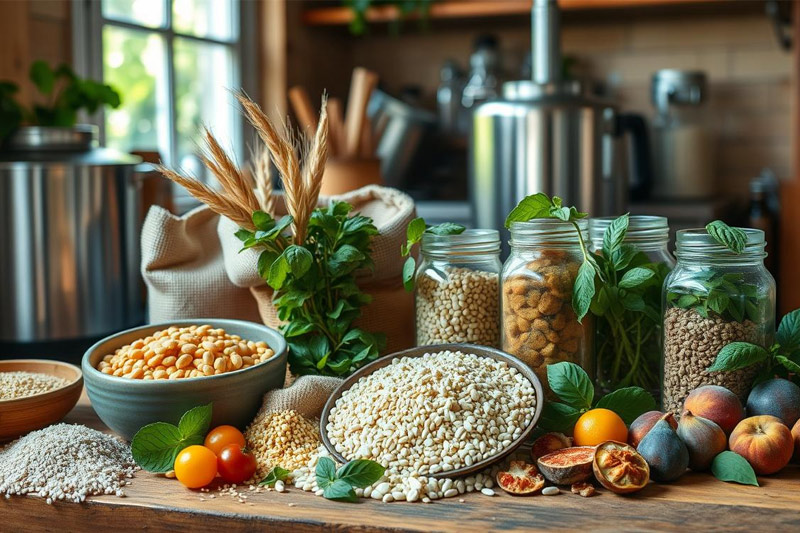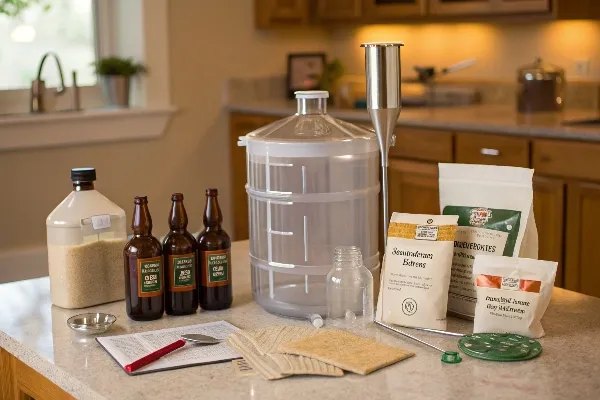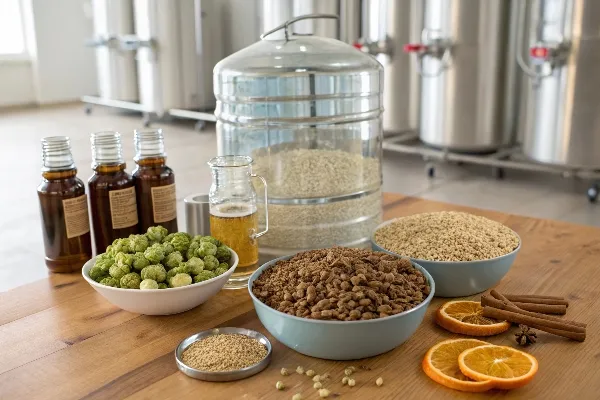I used to wonder if brewing my own beer would be fun or just a hassle. I didn’t want to waste time, money, or effort on something disappointing.
Homebrewing is worth it if you value creativity, learning, and personalized flavors. It requires time and effort but offers satisfaction, cost savings, and a deeper appreciation for beer.

Let me share what I’ve learned through years of brewing experience, so you can decide if homebrewing is the right fit for your lifestyle and taste.
How Hard Is Brewing Your Own Beer?
I was intimidated by the idea of brewing my own beer. I thought it required special skills or fancy equipment that I couldn’t handle.
Brewing beer at home is straightforward for beginners, though mastering advanced techniques takes time. Basic brewing kits simplify the process, while attention to cleanliness and patience are key.

The Learning Curve of Homebrewing
When I brewed my first batch, I expected it to be overly complicated. But I soon realized that most beginner-friendly homebrewing kits walk you through every step. These kits often include malt extract, yeast, hops, and clear instructions. If you can follow a recipe in the kitchen, you can brew your first beer.
Here’s a typical beginner process:
| Step | What Happens |
|---|---|
| Sanitizing | Clean all equipment to avoid contamination |
| Boiling | Mix malt, hops, and water, then boil the mixture |
| Cooling | Lower the temperature quickly |
| Fermenting | Add yeast and let it ferment for 1-2 weeks |
| Bottling | Add priming sugar, transfer to bottles |
| Carbonation/Aging | Let bottles sit to carbonate and mature |
The hardest part, in my opinion, is staying patient. It takes a few weeks before you can drink your beer. Some people expect instant results, but rushing the fermentation or aging process often ruins flavor.
As I got better, I started experimenting with all-grain brewing, adjusting water chemistry, or testing different yeast strains. These steps require more equipment and knowledge, but they also offer greater control over taste and quality.
I believe anyone can learn to homebrew. It’s like learning to cook. You start with simple recipes, make mistakes, and gradually get better. If you enjoy hands-on projects and creativity, the learning process is part of the fun.
Are Craft Beers Healthier?
I’ve often heard people say craft beers are healthier because they’re made with better ingredients. I wanted to find out if there’s real truth behind this idea.
Craft beers may contain fewer preservatives and more natural ingredients, but they still contain alcohol and calories. Moderate consumption offers benefits like antioxidants, but overdrinking has health risks.

Nutrition and Ingredients in Craft Beer
One thing I appreciate about craft beer is that brewers often use high-quality ingredients. Many avoid artificial flavors, preservatives, or additives common in mass-produced beers. Instead, they focus on fresh hops, specialty malts, and unique yeast strains, which can result in richer flavors and fewer chemicals.
Here’s a basic comparison:
| Aspect | Craft Beer | Mass-Produced Beer |
|---|---|---|
| Ingredients | Fresh, natural, specialty grains | Often adjunct grains, preservatives |
| Alcohol Content | Higher (5-12% ABV typical) | Lower (3-5% ABV typical) |
| Calories per Bottle | 150-300+ calories | 100-150 calories |
| Additives/Preservatives | Rare | Common |
Some craft beers include additional ingredients like fruit, honey, or herbs, adding nutrients and antioxidants. Certain styles, such as darker beers, contain more polyphenols, which may offer heart health benefits.
However, craft beers often have a higher alcohol content and more calories than standard lagers. Drinking them in large quantities negates any potential health benefit. I learned that moderation is key.
In my experience, if health is your primary focus, light beers or non-alcoholic craft options might be better. But if you’re looking for quality, fewer chemicals, and richer taste in smaller servings, craft beers do have an edge over mass-market brands.
Is It Safe to Drink Home Brewed Beer?
I remember my first batch and being nervous. I wasn’t sure if my homemade beer was safe or if I might get sick from drinking it.
Yes, it is safe to drink home brewed beer if proper sanitation and brewing practices are followed. The alcohol and acidity naturally prevent harmful bacteria, but contamination risks exist if equipment is not cleaned well.
Avoiding Contamination and Risks
One thing I quickly learned is that cleanliness is the biggest factor in safe homebrewing. Beer is relatively resistant to dangerous bacteria because it’s alcoholic, low in pH, and contains hops with antimicrobial properties. However, sloppy sanitation can still ruin a batch and introduce bad flavors.
Here are common contamination risks:
| Risk Factor | How to Prevent |
|---|---|
| Dirty Equipment | Sanitize all surfaces and tools before use |
| Incomplete Fermentation | Monitor fermentation temperature and time |
| Airborne Contaminants | Cover fermenters with airtight lids and airlocks |
| Bottling Mistakes | Sterilize bottles, avoid reusing dirty caps |
I use a no-rinse sanitizer and clean every piece of equipment before and after brewing. I also check that my fermentation vessels seal tightly to prevent airborne exposure. Any shortcuts can lead to off-flavors like sourness, unwanted funkiness, or even mold growth.
The good news is that even if something goes wrong, it’s very unlikely to make you sick. Most brewing mistakes affect taste, not safety. If the beer smells terrible or tastes off, I simply dump it and learn for the next batch.
In short, homebrewed beer is safe when brewed responsibly. Respecting cleanliness, fermentation times, and proper bottling practices keeps your beer enjoyable and safe to drink.
What Is the Shelf Life of Homebrew Beer?
I used to wonder how long my homemade beers would last before they went bad. I didn’t want to waste effort brewing something that would spoil too quickly.
Most homebrewed beer stays fresh for 3 to 6 months, depending on the style, storage conditions, and sanitation. Properly bottled and kept in a cool, dark place, some stronger styles can last a year or longer.
Factors That Affect Homebrew Shelf Life
Several things determine how long your beer stays drinkable. I found that alcohol content, packaging method, and storage play major roles. Higher-alcohol beers like stouts or barleywines naturally last longer because the alcohol acts as a preservative. Lighter beers, such as pale ales or lagers, may lose flavor more quickly.
Here’s a breakdown:
| Factor | Impact on Shelf Life |
|---|---|
| Alcohol Content | Higher ABV = Longer shelf life |
| Sanitation | Clean brewing reduces spoilage risk |
| Bottle Condition | Airtight sealing prevents oxidation |
| Light Exposure | UV light causes off-flavors (skunking) |
| Temperature | Cooler, consistent temps preserve freshness |
In my experience, after about three months, hop-forward beers like IPAs start to lose their bright aroma. Maltier or darker beers tend to hold up better. If the beer was bottled with good sanitation and priming sugar, it should stay carbonated and drinkable for months.
I store my homebrews in a basement where the temperature stays steady. Fluctuations or heat can speed up aging and spoilage. I also keep bottles out of direct sunlight, as light exposure quickly ruins taste.
Lastly, I always label the brew date and style. That way, I know which bottles to drink first. Even though some strong beers improve with age, I learned it’s better to consume lighter ones while they’re fresh.
Conclusion
Homebrewing offers creativity, control, and rewarding results when approached with patience, cleanliness, and an understanding of the process.
